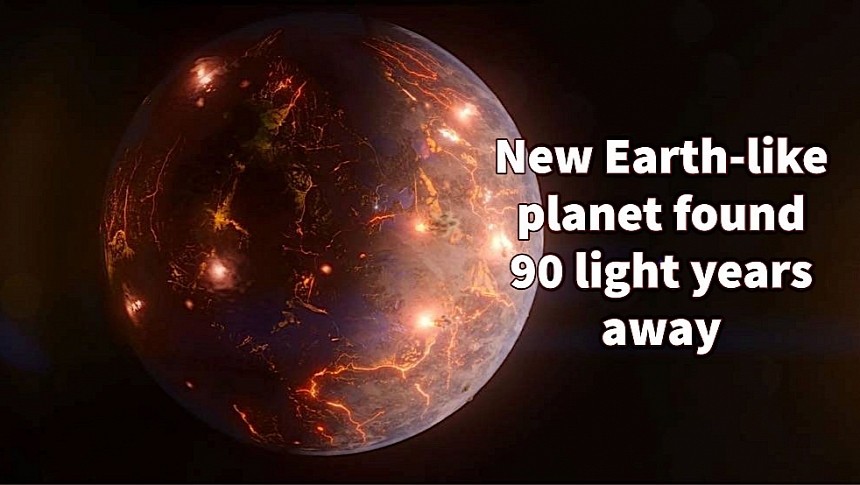With the James Webb out and about up there is space, doing some wonderful science, it's easy to forget there are other pieces of hardware that helped our race advance our knowledge of the Universe. Some of them are even decommissioned, but they still are the source of incredible findings.
One of these pieces of hardware is the Spitzer Space Telescope. Sent into space in 2003, it was retired in 2020 after spending almost two decades spying on the Universe in infrared. The amount of data it sent back is so vast it is still subject to study at the hands of specialized teams across the world.
By combining data from Spitzer with info coming from the Transiting Exoplanet Survey Satellite (TESS) and other ground-based piece of equipment, a team from the University of Montreal discovered an exciting new Earth-like planet in a constellation called Crater.
The red dwarf star this newly-found planet orbits is located 90 light years away from Earth, and it's part of a system about which we already know to have at least two more other planets. All three are larger than Earth and rocky, but it's this latest one that gets all the attention.
Just a tad larger than our own planet, LP 791-18 d, as it's called, is tidally locked, meaning one of its sides always faces the local sun. It's also literally drowning in volcanos, most of them active.
Because it's located roughly in its system's Goldilocks Zone, meaning far enough from, and at the same time close enough to its star for water in liquid form to exist. Sure, the conditions on the always-day side of the planet are too hot to allow for that, but the night side, and the presence of so much volcanic activity, point to water being there, at least in condensed form in the planet's atmosphere or even on the surface.
News about the discovery just broke, as a paper on the subject was published this week in Nature. The place has so much potential, though, that it may catch the eye of humanity's most potent telescope currently in operation, Webb.
The giant piece of tech has already been pointed at another planet in that system, LP 791-18 c (not much data on those observations are available yet), but d could also become an object of study in the near future (probably not during the upcoming observation cycle, as that has already been approved).
As one of the few places we know of to be so volcanically active outside our solar system, the planet could help determine if or how big of a role volcanos play in the emergence of life. Something to look forward to, then, once Webb is pointed that way.
By combining data from Spitzer with info coming from the Transiting Exoplanet Survey Satellite (TESS) and other ground-based piece of equipment, a team from the University of Montreal discovered an exciting new Earth-like planet in a constellation called Crater.
The red dwarf star this newly-found planet orbits is located 90 light years away from Earth, and it's part of a system about which we already know to have at least two more other planets. All three are larger than Earth and rocky, but it's this latest one that gets all the attention.
Just a tad larger than our own planet, LP 791-18 d, as it's called, is tidally locked, meaning one of its sides always faces the local sun. It's also literally drowning in volcanos, most of them active.
Because it's located roughly in its system's Goldilocks Zone, meaning far enough from, and at the same time close enough to its star for water in liquid form to exist. Sure, the conditions on the always-day side of the planet are too hot to allow for that, but the night side, and the presence of so much volcanic activity, point to water being there, at least in condensed form in the planet's atmosphere or even on the surface.
News about the discovery just broke, as a paper on the subject was published this week in Nature. The place has so much potential, though, that it may catch the eye of humanity's most potent telescope currently in operation, Webb.
The giant piece of tech has already been pointed at another planet in that system, LP 791-18 c (not much data on those observations are available yet), but d could also become an object of study in the near future (probably not during the upcoming observation cycle, as that has already been approved).
As one of the few places we know of to be so volcanically active outside our solar system, the planet could help determine if or how big of a role volcanos play in the emergence of life. Something to look forward to, then, once Webb is pointed that way.









